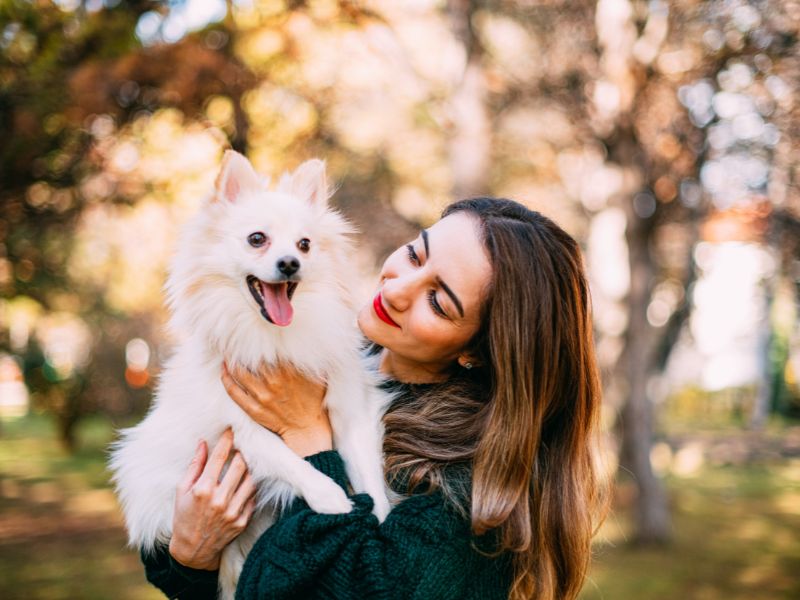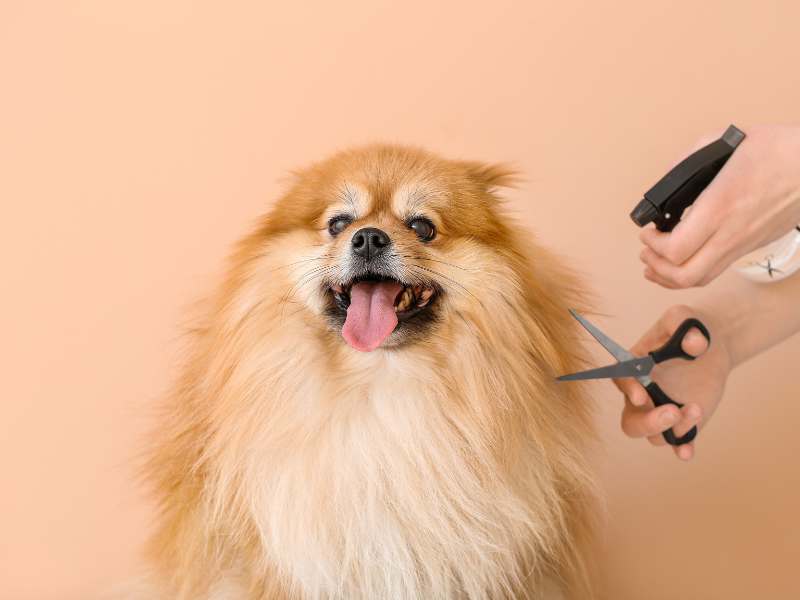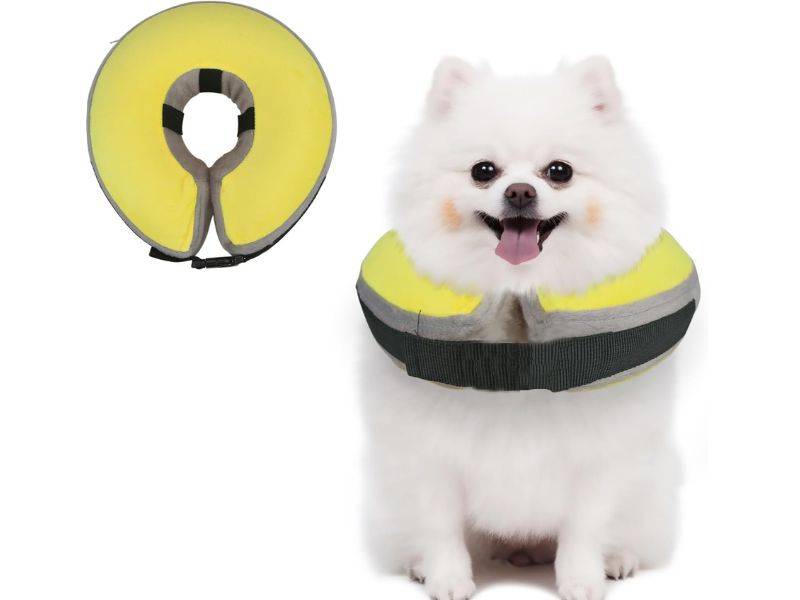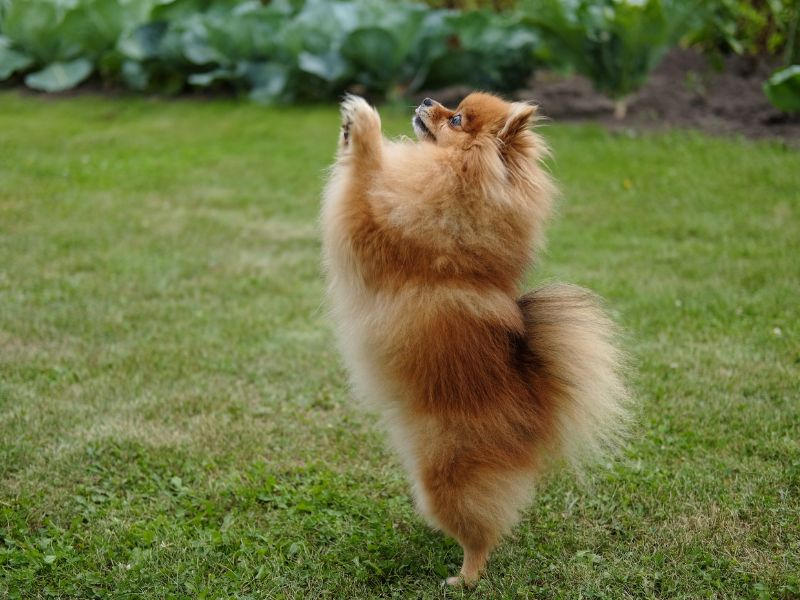
If you’re witnessing your dog’s hair standing up for the first time, you might be curious about its significance.
Contrary to common belief associating raised hackles with aggression or caution, the reality is not that straightforward.
Having observed diverse dog behaviors extensively, it becomes evident that the occurrence of hackles is triggered by various stimuli—ranging from sudden noises to having an enjoyable time with their canine companions!
We’ll provide a comprehensive overview of elevated hackles in dogs, covering typical triggers, accompanying indicators, and the appropriate steps to take upon witnessing this occurrence.
Dog Hackles, what are Those?
Dog hackles refer to the hairs extending from the neck along the spine to the base of the tail.
When these hackles are elevated, you’ll observe the hairs standing upright, a phenomenon also referred to as piloerection.
Based on the breed, the visibility of raised hackles in dogs may be hindered by long or curly hair. Therefore, it becomes crucial to observe other cues or signals they might be exhibiting.
What does the term Piloerection mean
Piloerection involves the involuntary tightening of small muscles at the hair follicle base, resulting in the elevation of hairs, akin to the formation of goosebumps in humans.
In certain animals, its inherent purpose is to give the impression of increased size to predators in times of danger.
Diverse stimuli, including fear, the assertion of dominance, excitement, or anxiety, can lead to piloerection in dogs.
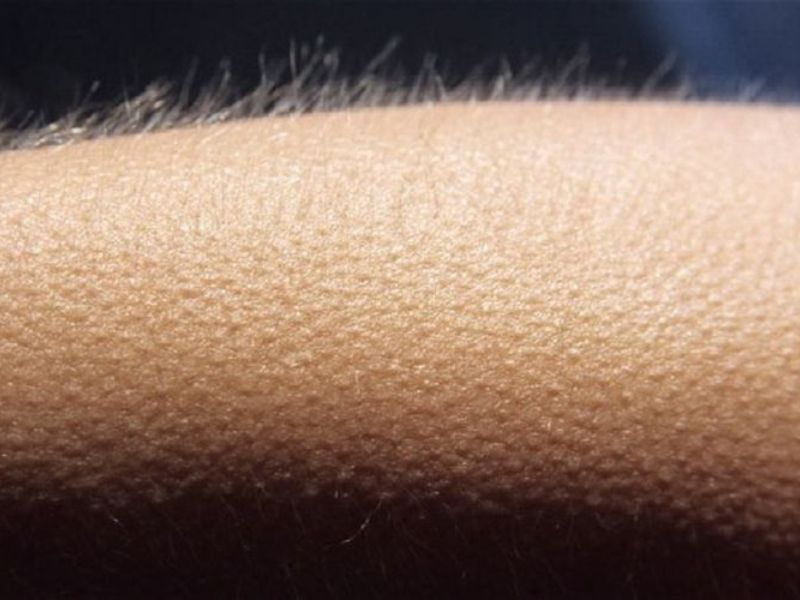
Are Hackles Present in Every Dog?
Indeed, all dogs possess hackles, but their visibility depends on the breed.
Detecting hackles in breeds with lengthy, fluffy, or curly fur, like pomeranian, can be challenging. Short-haired dogs are generally more apparent in displaying piloerection.
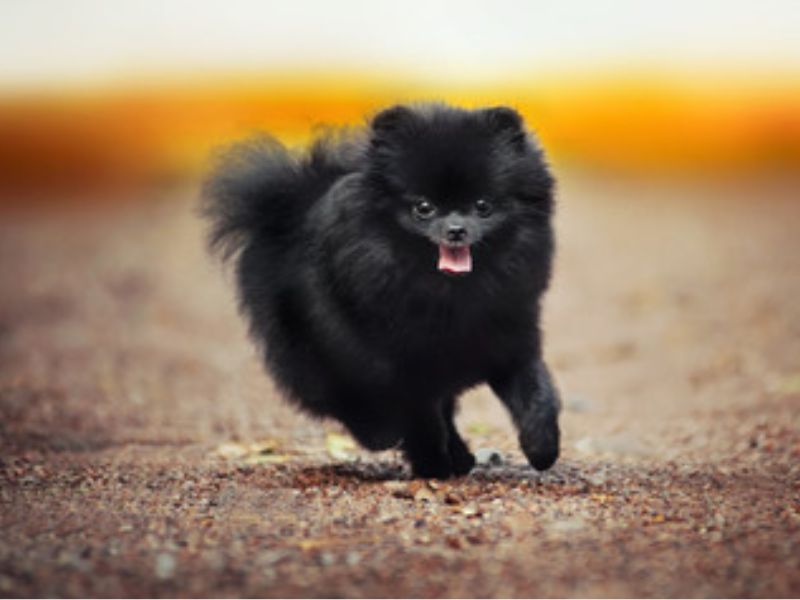
5 Factors Leading to Raised Dog Hackles
Elevated hackles in dogs suggest heightened vigilance.
This reaction could be triggered by fear, surprise, feelings of insecurity, excitement, or uncertainty about a given situation.
It’s a physiological reaction to the stimulation of the sympathetic nervous system, leading to piloerection along the neck and back.
Various stimuli, ranging from a sudden clap of thunder to the thrill of a visitor, could result in the occurrence of hackles.
Dogs don’t perform this action consciously. Instead, it occurs similarly to how the hairs on our arms stand up when we encounter a surge of adrenaline.
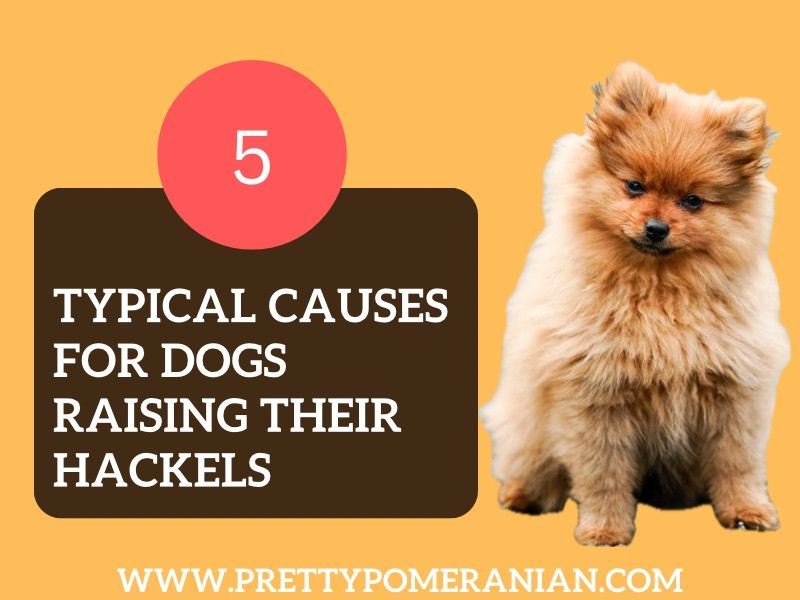
1. Anxiety
Dogs may elevate their hackles when confronted with fear of unfamiliar situations or if they sense a threat from something in their environment.
For example, in a dog-to-dog interaction, they might experience intimidation due to the size and stature of the other dog. Your petite dog, for instance, could raise its hackles in reaction to an excessively large dog.
Fear can also arise from loud or unforeseen sounds like thunder or fireworks – anything that your dog finds unfamiliar or unanticipated.
2. Startlement or Unanticipated Events
Dogs might elevate their hackles when taken by surprise or confronted with the unexpected. This could occur when someone (or another dog) unexpectedly emerges from around a corner, for instance.
In such instances, you might observe your dog’s tail being tucked between their legs, as this is another indication of them potentially feeling anxious or frightened.
3. Assertivenss / Dominance
Dogs might elevate their hackles as a way to establish dominance over another dog or individual.
This behavior can manifest during dog training sessions when your dog is seeking to determine leadership, for example.
A dominant dog may raise their hackles and emit a growl if they perceive a threat from a dog that is not adhering to their commands or is displaying overly excited behavior.
4. Uncertainty
If your typically self-assured dog suddenly raises its hackles without apparent cause, it could indicate feelings of uncertainty in the present circumstances.
This shift in behavior may be linked to changes in their environment, such as the introduction of a new baby or pet into the home, or arising from their uncertainty about something novel that has transpired.
5. Enthhusiasm
Dogs may elevate their hackles while engaged in play with another dog, or even during interactions with you!
This behavior typically coincides with vigorous tail wagging and serves as an indication that they are highly stimulated or filled with excitement.
10 Significant Signs Accompanied by Elevated Hackles
Raised hackles alone may not convey much information, but when coupled with additional body language and signals, they contribute to a more precise understanding of your dog’s emotional state.
Here are 10 crucial aspects to pay attention to:
1. Licking of the Lips
Frequently observed when a dog is attempting to display submission, lip licking can indicate nervousness or anxiety.
Additionally, it serves as a method to pacify other dogs, signaling that they pose no threat and aiming to alleviate tension in a potentially stressful situation.
2. Tail Movement
A moving tail is commonly interpreted as an expression of joy, although this isn’t universally true.
If the tail is wagging in a low position, it might signify that your dog feels threatened and is still evaluating the situation.
A rapidly wagging tail along with raised hackles could suggest fear-based aggression rather than confidence-based aggression.
3. Tail Positioned Beneath Legs

A dog with its tail tucked between its legs is conveying a sense of fear and vulnerability.
This stance is frequently observed when dogs encounter or perceive something that triggers fear and anxiety.
4. Motionless Stance
Dogs may occasionally remain motionless when they perceive a threat.
This behavior can indicate that they are in the process of evaluating the situation, determining their next course of action, and conducting their own risk assessment.
5. Raised Ears
This signifies the dog’s attentiveness and curiosity about its surroundings, typically reflecting a sense of confidence.
6. Ears Flattened Back

If your dog displays raised hackles with ears pinned back, it is probable that they are experiencing fear, defensiveness, or uncertainty in their environment.
7. Dilated Eyes
Similar to ears being flattened back, wide eyes also indicate that the dog perceives a threat from something or someone and is in a heightened state of alertness.
8. Protective Vocalization
Barking serves as a dog’s means of vocal expression. Unlike humans, dogs lack the ability to use words to communicate their emotions, so their barking provides valuable insight into how they interpret their surroundings.
It’s essential for every dog owner to discern the distinction between a defensive bark and a playful bark when assessing their dog’s behavior.

9. Growling
When growling is combined with elevated hackles, it typically signifies a dog’s communication of “I’m uncomfortable with this (or you), please step back immediately.”
This behavior is frequently accompanied by additional defensive body language, such as exposed teeth.
10. Intense Sniffing
Sniffing is a dog’s method of gathering information about its surroundings.
When a dog engages in an intense sniffing spree with raised hackles, it is usually prompted by the scent of another animal.
This behavior is more likely to occur in the dog’s designated territory, such as its backyard.

What Steps to Take When Your Dog Displays Raised Hackles?
When your dog raises its hackles, it is crucial to focus on the source of their heightened stimulation, especially in encounters with unfamiliar dogs or situations.
You might need to diffuse the situation by relocating your dog from the present environment, or you may simply need to monitor their subsequent behavior.
The appropriate course of action varies based on the specific situation, the potential causes for the heightened stimulation, and the additional signs exhibited by your dog.

For instance…
1. Fear
Scenario:
Your dog’s hackles are raised in response to an unforeseen (yet non-threatening) loud noise.
Recommended Action:
Attempt to mimic the sound to deceive your dog into thinking it originated from you, promptly diminishing the perceived threat.
Continue with your usual activities, treating the noise as inconsequential, in order to normalize the situation and provide reassurance that there is no imminent danger.
Actions to Avoid:
In this scenario, the least favorable action is to startle your dog by uttering phrases such as “What was that? Go check it out,” or similar expressions that reinforce the idea of an impending threat to your dog.
While comforting a scared dog may seem like a compassionate gesture, it has the potential to foster excessive dependence.
This, in turn, might result in heightened anxiety for your dog, especially when left alone at home.
2. Aggresssion / Dominance
Scenario
Your dog’s hackles are raised when approached by another dog or puppy.
Recommended Action:
Your dog is in a state of heightened vigilance, and it’s crucial for you to remain alert as well. Pay close attention to their behavior and the accompanying body language during the interaction.
If your dog starts growling, baring teeth, or defensively barking, there is a risk of distressing the other dog (and its owner) or even the possibility of your dog snapping at (or attacking) them.
Call your dog back, refrain from giving treats (avoid inadvertently rewarding undesirable behavior), and calmly leash them before walking away.
Action to Avoid:
Pay attention to your dog’s elevated hackles, especially when they are encountering another dog, particularly if it’s their first meeting.
The other dog, especially if it’s a playful puppy, may not comprehend the signals your dog is conveying, potentially encroaching on your dog’s personal space when unwelcome.
Additionally, refrain from approaching your dog suddenly from behind or startling them when they display any indications of potential aggression towards another dog.
If you find yourself genuinely worried about your dog’s raised hackles and their behavior towards others, it may be beneficial to enroll in a professional online training course. Such courses can assist in desensitizing your dog and promoting a calmer response to whatever is causing the issue. We recommend the K9TI Masterclass for this purpose.
3. Playtime

Scenario:
Your dog’s hackles are elevated during playtime with other dogs.
Recommended Action:
When your dog engages in cheerful play with other dogs and exhibits raised hackles, there’s typically no cause for concern. It’s likely an indication that they are thoroughly enjoying themselves!
Elevated hackles while playing indicate heightened stimulation and excitement. As long as there are no signs of aggression accompanying it, there is no need for concern.
It could also signify a display of dominance, which doesn’t necessarily imply an imminent aggressive response.
Action to Avoid:
No need to become alarmed and instruct your dog to cease playing or settle down!
Your dog won’t comprehend what they did wrong, and confusion might lead to the manifestation of other peculiar behaviors during social interactions.
Unless the other dog’s owner expresses disapproval of the playfulness, allow them to continue enjoying their fun!
What about Elevated Hackles During a Dog’s Sleep?
There might be curiosity about whether hackles can be raised when dogs are sleeping or dreaming. The response is affirmative – dogs can exhibit raised hackles in reaction to stimuli, even during their sleep.
Typically, there’s no cause for concern. Dogs, like humans, can experience occasional stimulation from their dreams!
This might be a response to a dream where your dog feels fear or threat, so it’s essential not to disturb a sleeping dog with raised hackles (or any signs of aggression), as it could result in a bite.
Is it Possible to Prompt My Dog to Raise Its Hackles?
It’s highly improbable that you can reproduce the specific stimulation or circumstance needed to induce your dog to raise its hackles.
Even though elevated hackles don’t necessarily signify stress, they may indicate that your dog is uneasy or feels threatened.
It is never advisable to compel dogs into situations that might make them feel anxious or defensive just to observe their hackles raised.
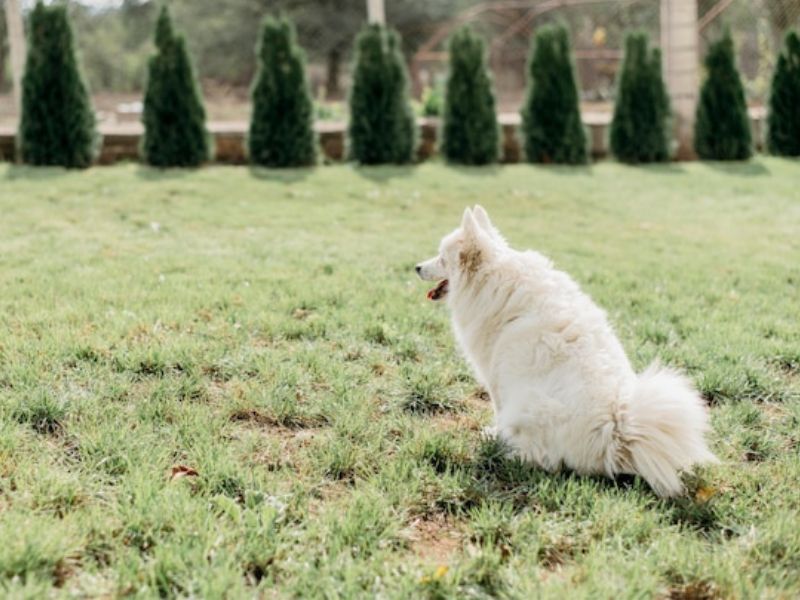
No Cause for Concern with Elevated Hackles
All dogs possess hackles, though it’s more conspicuous in certain breeds. Although raised hackles may not consistently indicate aggression or fear, it’s wise to remain attentive and discern the potential triggers.
If uncertainty arises, feel free to post your queries in the comments. We’re always up for a good conversation!




